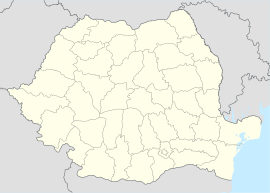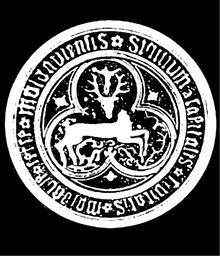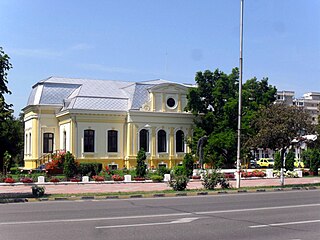
Bacău is the main city in Bacău County, Romania. With a population of 136,087, Bacău is the 14th largest city in Romania. The city is situated in the historical region of Moldavia, at the foothills of the Carpathian Mountains, and on the Bistrița River. The Ghimeș Pass links Bacău to the region of Transylvania.

Brăila is a city in Muntenia, eastern Romania, a port on the Danube and the capital of Brăila County. The Sud-Est Regional Development Agency is located in Brăila.
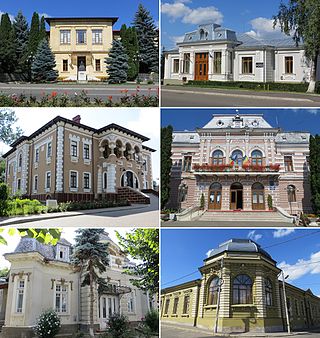
Fălticeni is a town in Suceava County, northeastern Romania. It is situated in the historical region of Western Moldavia. According to the 2021 census, Fălticeni is the third largest urban settlement in the county. It was declared a municipality in 1995, along with two other cities in Suceava County: Rădăuți and Câmpulung Moldovenesc.
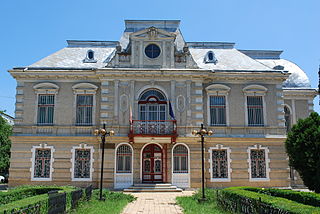
Roman is a city located in the central part of Western Moldavia, a traditional region of Romania. It is located 46 km (29 mi) east of Piatra Neamț, in Neamț County at the confluence of the rivers Siret and Moldova.

Câmpulung Moldovenesc is a city in Suceava County, northeastern Romania. It is situated in the historical region of Bukovina.

Borșa is a town in eastern Maramureș County, Maramureș, Romania. It administers one village, Băile Borșa.

Dolhasca is a town in Suceava County, in the historical region of Western Moldavia, northeastern Romania. Dolhasca is the eighth largest urban settlement in the county, with a population of 11,007 inhabitants as of 2021. It was declared a town in 2004, along with seven other localities in Suceava County. The town administers seven villages, namely: Budeni, Gulia, Poiana, Poienari, Probota, Siliștea Nouă, and Valea Poienei.

Leordina is a commune in Maramureș County, Maramureș, Romania. It is composed of a single village, Leordina.

Satulung is a commune in Maramureș County, Romania. Its name, translated in English, means "the long village". It is composed of seven villages: Arieșu de Pădure (Erdőaranyos), Fersig (Fehérszék), Finteușu Mic (Kisfentős), Hideaga (Pusztahidegkút), Mogoșești (Magosfalu), Pribilești (Pribékfalva), and Satulung.

Fundu Moldovei is a commune located in Suceava County, Bukovina, northeastern Romania. It is composed of ten villages, namely: Botuș, Botușel, Braniștea, Colacu, Delnița, Deluț, Fundu Moldovei, Obcina Ursului, Plai, and Smida Ungurenilor.

Dorna Candrenilor is a commune located in Suceava County, in the historical region of Bukovina, northeastern Romania. It is composed of three villages: Dealu Floreni, Dorna Candrenilor, and Poiana Negrii. It included five other villages until 2003, when these were split off to form Coșna commune.

Siminicea is a commune located in Suceava County, Western Moldavia, northeastern Romania. It is composed of two villages, Grigorești and Siminicea.

Slatina is a commune located in Suceava County, Western Moldavia, Romania. It is composed of three villages: Găinești, Herla and Slatina.

Vadu Moldovei is a commune located in Suceava County, Western Moldavia, Romania. It is composed of eight villages: Cămârzani, Ciumulești, Dumbrăvița, Ioneasa, Mesteceni, Movileni, Nigotești, and Vadu Moldovei. It included four other villages until 2003, when these were split off to form Fântâna Mare Commune.

Ciocănești is a commune located in Suceava County, in the historical region of Bukovina, northeastern Romania. It is composed of two villages, more specifically Botoș and Ciocănești. These were formerly part of Iacobeni commune until 2002, when they were split off.
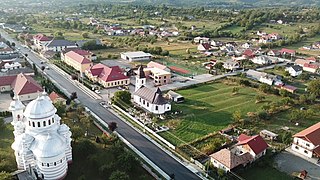
Bistrița Bârgăului is a commune in Bistrița-Năsăud County, Transylvania, Romania. It is composed of two villages, Bistrița Bârgăului and Colibița (Kolibica).

Ilva Mică is a commune in Bistrița-Năsăud County, Transylvania, Romania. It is composed of a single village, Ilva Mică.

Lunca Bradului is a commune in Mureș County, Transylvania, Romania. It is composed of three villages: Lunca Bradului, Neagra (Nyágra), and Sălard (Szalárd).

Groșii Țibleșului is a commune in Maramureș County, Transylvania, Romania. It is composed of a single village, Groșii Țibleșului, which split off in 2003 from the Suciu de Sus commune to form the present commune.

Răucești is a commune in Neamț County, Western Moldavia, Romania. It is composed of four villages: Oglinzi, Răucești, Săvești, and Ungheni.



